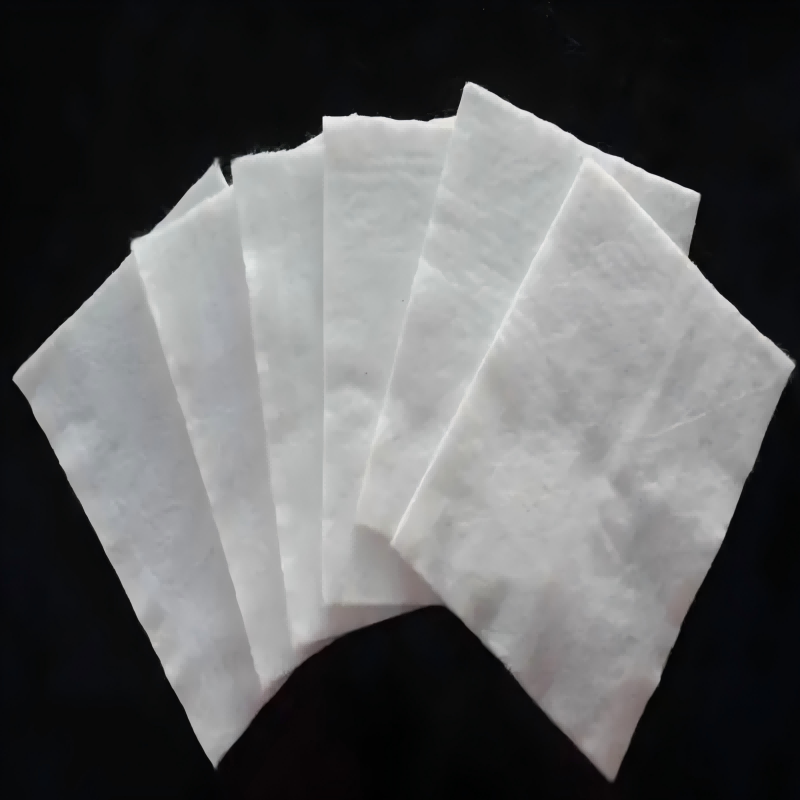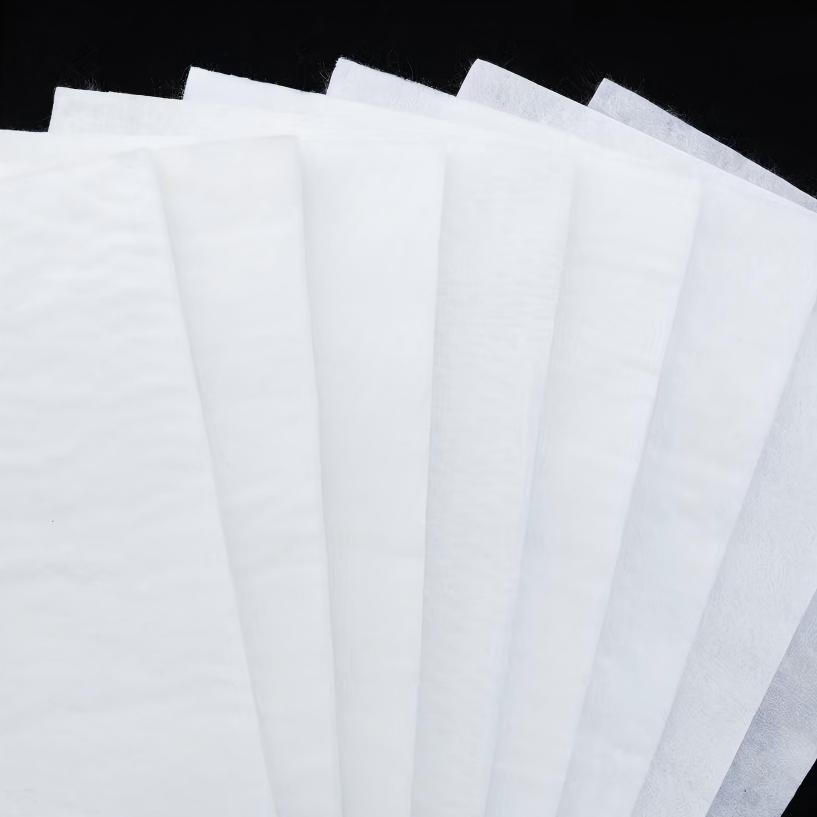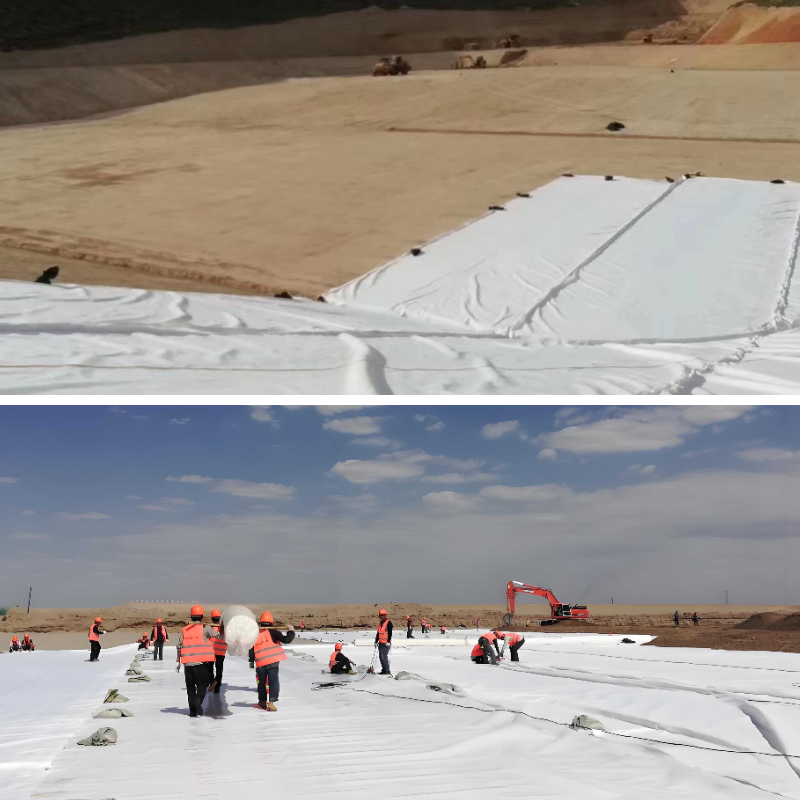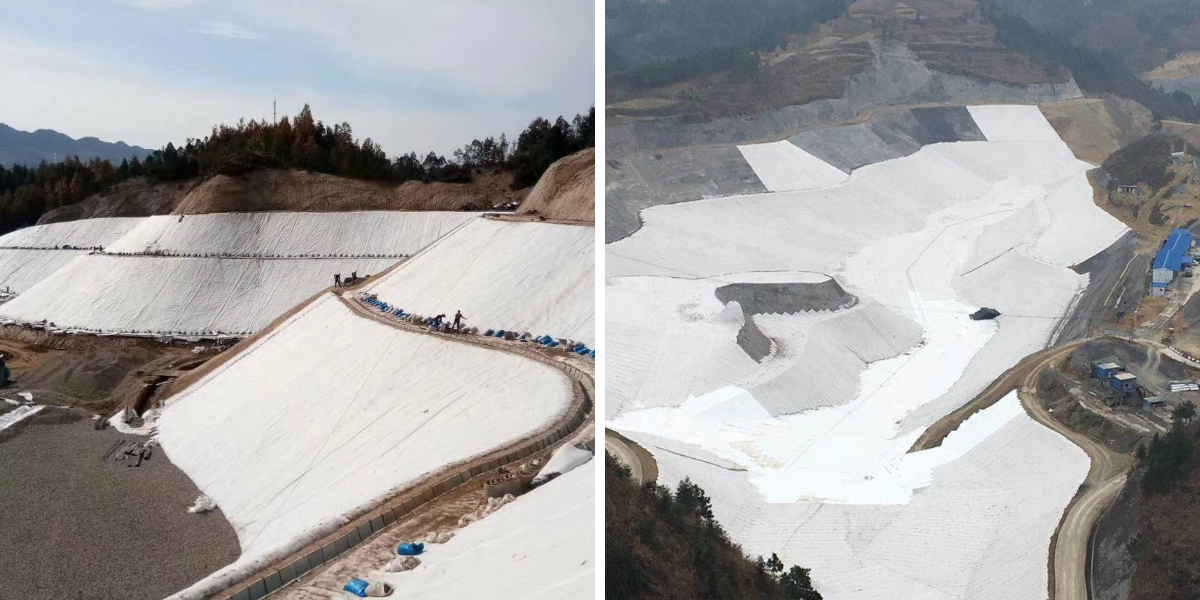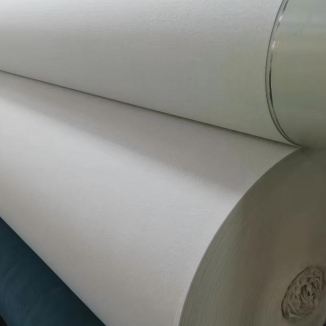Filtre Geotextile
1. Powerful functionality, versatile: It can simultaneously achieve multiple core functions such as isolation, filtration, drainage, and reinforcement, efficiently solving complex problems in engineering.
2. Economically efficient and cost saving: It can significantly reduce the use of natural materials such as sand and stone, shorten the construction period, and thus significantly reduce the overall cost of the project.
3. Easy construction: lightweight material, roll supply, high laying efficiency
4. Durable and corrosion-resistant, widely used: Made of synthetic fibers, it has good chemical and biological resistance, long service life, and is suitable for many fields such as water conservancy, transportation, and environmental protection.
Product Introduction:
Filtre Geotextile is a permeable geosynthetic material made of synthetic fibers (such as polypropylene, polyester, nylon, etc.) through needle punching or weaving processes. It is usually in the form of a roll, with a width of 1-6 meters and a length of up to hundreds of meters. Geotextile is one of the most widely used and fundamental geosynthetic materials in civil engineering, known as the "cotton of civil engineering".
Main functions
Geotextiles mainly play the following functions in engineering, and usually one type of geotextile will have multiple functions at the same time:
1. Separation:
Function: Separate soil layers of different properties or particle sizes (such as roadbed soil and crushed stone filling) to prevent them from losing their respective properties due to mixing, thereby maintaining the long-term stability of the structure.
Example: When laying roads on soft soil foundations, prevent crushed stones from sinking into the soft soil or soft soil from entering the crushed stone layer, which may cause the roadbed to fail.
2. Filtration:
Function: Allow water to flow smoothly through the geotextile, while effectively preventing excessive loss of soil particles and preventing the occurrence of piping. It functions as a traditional gravel filter layer.
Example: Used as a filter layer behind the drainage structure of dams and retaining walls.
3. Drainage:
Function: Geotextile itself has a certain thickness and pores, which can collect and discharge water flow (such as rainwater and groundwater) along its plane direction.
Example: Used inside earth dams, around tunnels, underground drainage ditches, etc. to guide water to drainage outlets.
4. Reinforcement:
Function: Utilizing its high tensile strength, dispersing loads, improving the shear strength and overall stability of soil, similar to the role of "steel bars" in concrete.
Example: Used for reinforced soil retaining walls, steep slope reinforcement, soft soil foundation treatment, etc.
5. Protection:
Function: As a buffer layer, it prevents or reduces the damage caused by sharp objects or external forces to the underlying geomembrane (anti-seepage layer) or other fragile materials.
Example: In a landfill, it is laid above and below the geomembrane to protect it from being pierced by gravel.
6. Erosion Control:
Function: To prevent soil surface from being eroded by water flow or wind.
Example: Used for slope protection projects on riverbanks, coasts, and slopes, combined with grass seeds, stones, etc.
Product Parameters:
project | metric | ||||||||||
Nominal strength/(kN/m) | |||||||||||
6 | 9 | 12 | 18 | 24 | 30 | 36 | 48 | 54 | |||
1 | Longitudinal and transverse tensile strength / (kN/m) ≥ | 6 | 9 | 12 | 18 | 24 | 30 | 36 | 48 | 54 | |
2 | Maximum elongation at maximum load in longitudinal and transverse directions/% | 30~80 | |||||||||
3 | CBR top penetration strength /kN ≥ | 0.9 | 1.6 | 1.9 | 2.9 | 3.9 | 5.3 | 6.4 | 7.9 | 8.5 | |
4 | Longitudinal and transverse tearing strength /kN | 0.15 | 0.22 | 0.29 | 0.43 | 0.57 | 0.71 | 0.83 | 1.1 | 1.25 | |
5 | Equivalent aperture O.90(O95)/mm | 0.05~0.30 | |||||||||
6 | Vertical permeability coefficient/(cm/s) | K× (10-¹~10-), where K=1.0~9.9 | |||||||||
7 | Width deviation rate /% ≥ | -0.5 | |||||||||
8 | Unit area mass deviation rate /% ≥ | -5 | |||||||||
9 | Thickness deviation rate /% ≥ | -10 | |||||||||
10 | Thickness coefficient of variation (CV)/% ≤ | 10 | |||||||||
11 | Dynamic perforation | Puncture hole diameter/mm ≤ | 37 | 33 | 27 | 20 | 17 | 14 | 11 | 9 | 7 |
12 | Longitudinal and transverse fracture strength (grab method)/kN ≥ | 0.3 | 0.5 | 0.7 | 1.1 | 1.4 | 1.9 | 2.4 | 3 | 3.5 | |
13 | Ultraviolet resistance (Xenon arc lamp method) | Longitudinal and transverse strength retention rate% ≥ | 70 | ||||||||
14 | Ultraviolet resistance (fluorescence UV lamp method) | Longitudinal and transverse strength retention rate% ≥ | 80 | ||||||||
Product Applications:
1. Water conservancy engineering
Embankment engineering: In the reinforcement of river embankments, seawalls, and lake embankments to meet standards, it is used to isolate the fill soil of the embankment body from the foundation soil, preventing the mixing of soil materials of different particle sizes; At the same time, as an anti filter layer, it prevents soil particle loss at the upstream face or seepage outlet of the dam, ensuring the stability of the dam.
Reservoir engineering: used for anti-seepage assistance of the reservoir dam body (combined with geomembrane), dam foundation drainage, and slope protection of the reservoir area, reducing the erosion of the reservoir bank by water flow.
River management: In river dredging and bank protection projects, it is laid on the surface of the bank slope or the structural layer of the embankment to prevent erosion and reinforce the slope; It is also used as a filter layer at the bottom of rivers to accelerate water circulation.
Flood prevention and rescue: In emergency situations, it can be quickly laid as anti-seepage or reinforcement materials to temporarily reinforce dams, block pipe surges, and reduce losses caused by flood disasters.
2. Highway and Railway Engineering
Soft foundation treatment: Lay geotextile under the roadbed, use its reinforcement effect to enhance the bearing capacity of the soft soil foundation, reduce roadbed settlement and uneven deformation, and avoid pavement cracking.
Road surface structure: laid between the base and surface layers of the road surface, serving as an isolation layer to prevent the base soil from entering the surface layer and alleviate reflection cracks caused by vehicle loads.
Slope protection: Geotextile is laid on the slopes on both sides of highways and railways, combined with vegetation planting (such as grass and shrubs), to form a composite protection system to prevent slope collapse caused by rainwater erosion.
Drainage system: In conjunction with drainage pipes and gravel layers, a drainage channel is constructed inside the roadbed to drain rainwater or groundwater out of the roadbed and prevent water accumulation from softening the foundation.
3. Municipal and Construction Engineering
Underground engineering: laid on the roof of the underground garage and around the subway tunnel as a drainage layer and isolation layer to prevent soil particles from blocking the drainage system, while protecting the waterproof layer from punctures.
Greening project: In urban green belts and park landscape areas, geotextiles are laid to isolate soil from planting soil, prevent weed growth (in conjunction with the function of grass proof cloth), and ensure water infiltration.
Landfill site: As an anti-seepage auxiliary layer and filtering layer of the landfill site, it isolates garbage from surrounding soil and groundwater, preventing leachate from polluting the environment; Simultaneously used for reinforcement and drainage of slopes in landfill areas.
4. Environmental Protection and Ecological Engineering
Wastewater treatment plant: It is laid at the bottom of sedimentation tanks and filtration tanks as a filtration layer to separate sludge from clean water and improve wastewater treatment efficiency.
Artificial wetland: used for anti-seepage isolation or water flow filtration at the bottom of wetlands, maintaining the stability of wetland ecosystems and preventing pollutants from infiltrating into groundwater bodies.
Tailings treatment: In mining tailings ponds, it serves as an isolation and filtration material to prevent the loss of tailings particles, while also discharging seepage from the tailings to avoid dam failure.
5. Agriculture and Horticulture
Farmland water conservancy: Lay in farmland drainage ditches and irrigation channels to prevent channel slopes from being washed away and collapsed by water flow, while filtering impurities in water to ensure irrigation water quality.
Greenhouse: used for reinforcing the foundation of the greenhouse and reducing soil settlement; Or as a surface cover layer, it can inhibit weed growth and maintain soil moisture.
6. Airports and Special Projects
Airport runway: Lay geotextile on the runway base to enhance the overall integrity of the foundation, reduce vibration deformation during aircraft takeoff and landing, and extend the service life of the runway.
Nuclear power plant engineering: used as isolation, anti-seepage, and reinforcement materials in key areas such as nuclear waste disposal zones and reactor foundations to ensure the safety and durability of the project.
In short, geotextile plays a core role in "protection, strengthening, and guidance" in various civil engineering projects through its diverse functions, and is an indispensable key material in modern engineering construction.


